The Mendling rushes wildly through its narrow gorge, which it has carved out over thousands of years. Until the early 20th century, its power was tamed by lumberjacks in order to quickly deliver felled wood to the furnaces of the numerous nearby ironworks. Though, the paths and facilities fell into disrepair with the end of the drift. Timber transport moved to the road.
Towards the end of the 1990s, the dilapidated Mendling drift was restored as a testimony to the past and integrated into the Erlebniswelt Mendlingtal. The park paints an ancient picture of the region when logs were still being floated, the coal piles smoked, the hammers of the forges clanged and the saws sang.
Lassing#
The morning mist still shrouds the Mendling Valley, but the sun is already peeking through. The starting point of the hike is the village of Lassing. The first kilometre initially leads downhill on a wide gravel path, then over a series of steps just before the valley floor until you reach the historic blacksmith’s house. The entrance fee for the Mendling Valley is also to be paid there: €10 for adults and €4.5 for children (as of the 2024 season). The park is open from 1 May to 31 October.
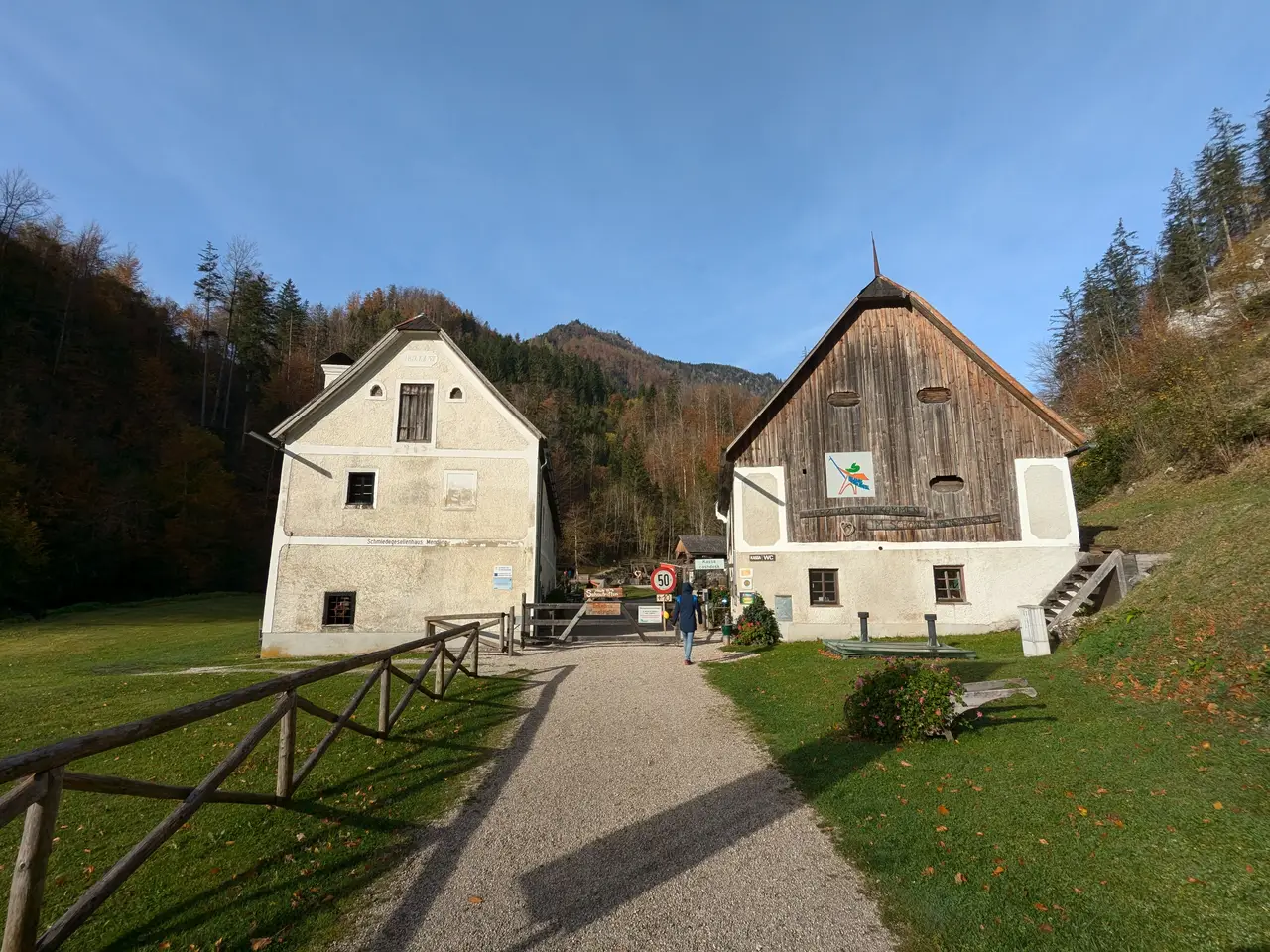
In the past, money was also charged for passing. The old toll-house is not far from here. The Mendling Pass near Lassing is the only pass in the Ybbstal Alps that connects Lower Austria and Styria. Otherwise, you have to go to Mariazell, which is around 50 kilometres away. Today’s main road was therefore an important trade route. The farmers from the fertile Ybbs valley supplied food, cabbage and later potatoes for the pre-industrial small iron industry around the Erzberg. They brought back all kinds of ironware. A profitable trade.
Mendling Valley#
In the blacksmith’s house, I visit the small exhibition about the life of the local population over a hundred years ago. The acrid smell of smoke still wafts into my nose in the former smoke kitchen. The doors are low. If you’re tall, you have to duck. People weren’t as tall as today back then.
Outside, I walk past the herb garden and on to the Venetian board saw. It is in operation twice a month. Every 1st Sunday and 3rd Saturday of the month, the Mendling Valley park offers a special spectacle: drifting logs through the valley and the saw and mill are also put into operation. The saw is driven by water power. A small flow of water is diverted from the Mendling and drives the saw’s water wheel.
As the name suggests, this kind of saw mill has its origins in Venice. The Republic of Venice needed countless planks to build its huge merchant fleet. For that, Leonardo da Vinci was hired to improve the sawmills of the time.
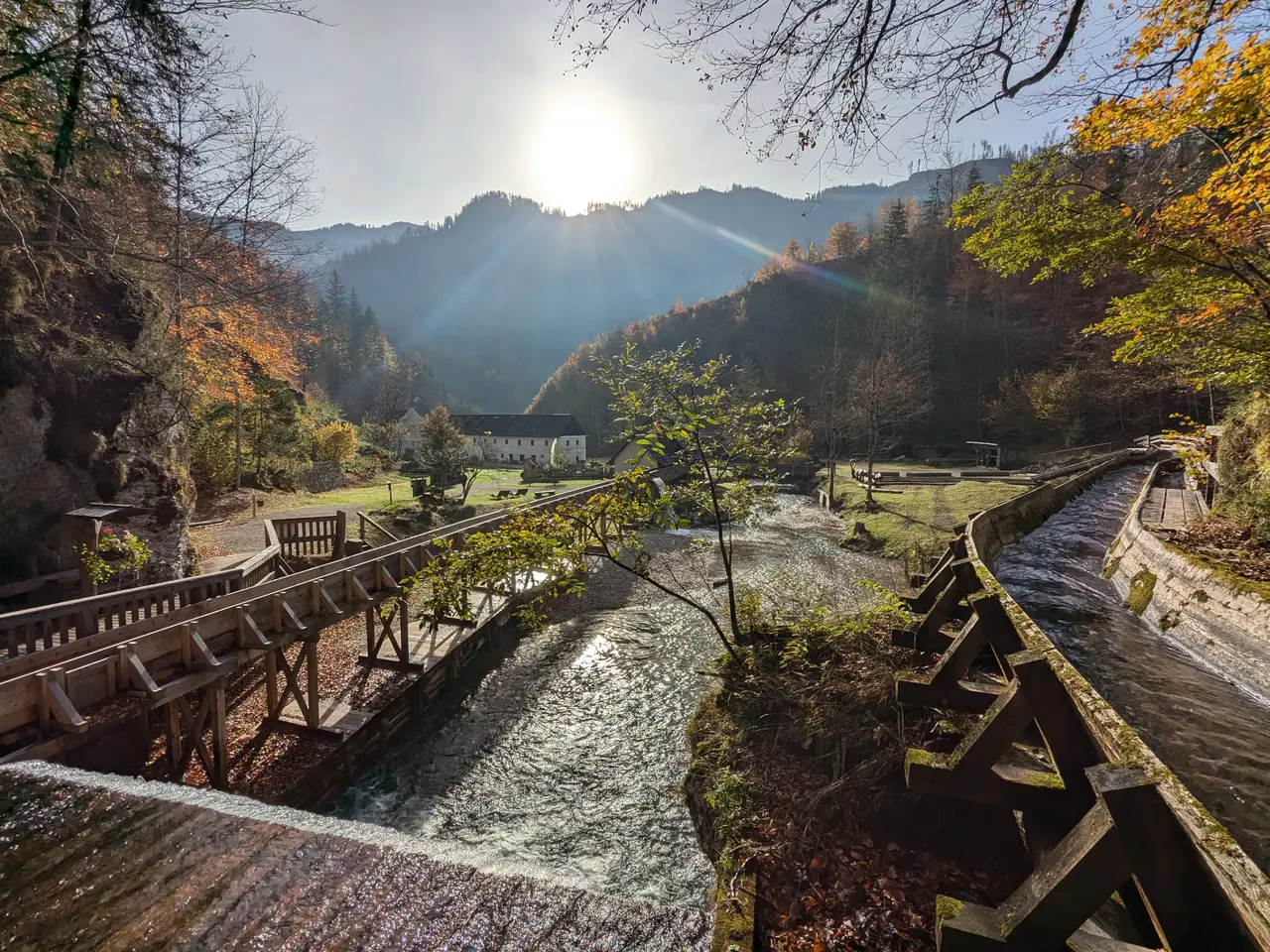
Stairs and bridges lead from the sawmill into the gorge. A small dam dams up water for the mill. The excess water spills over and falls down a few metres. The first waterfall of the hike.
Although I am in the mountains, where you would expect to find conifers, I recognize numerous deciduous trees. Ash, alder and beech. Their leaves bathe the valley in a wonderful, warm, red play of colours. In between, the clear blue of the Mendling river shines through the cold, grey rock.
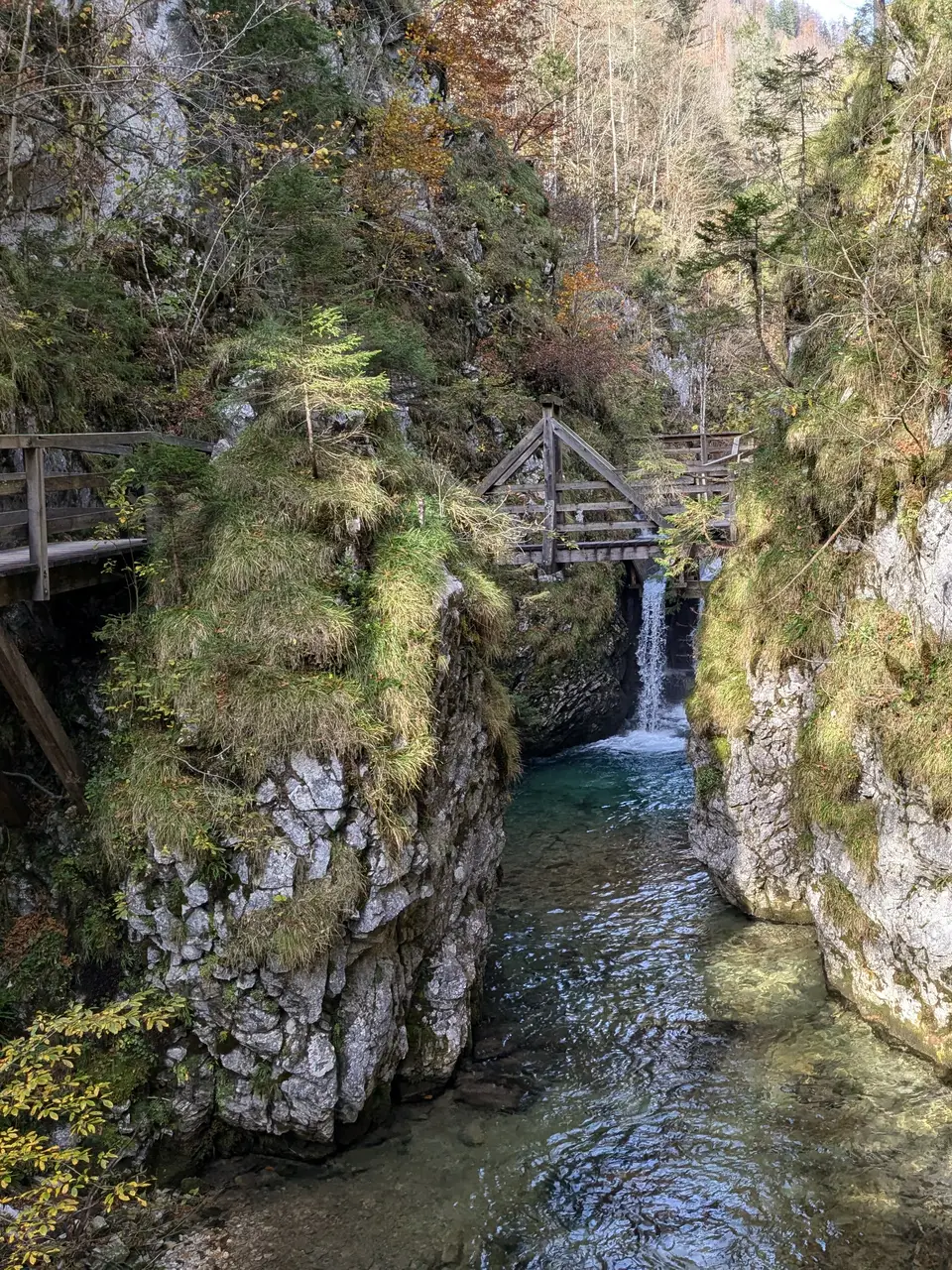 />
/>
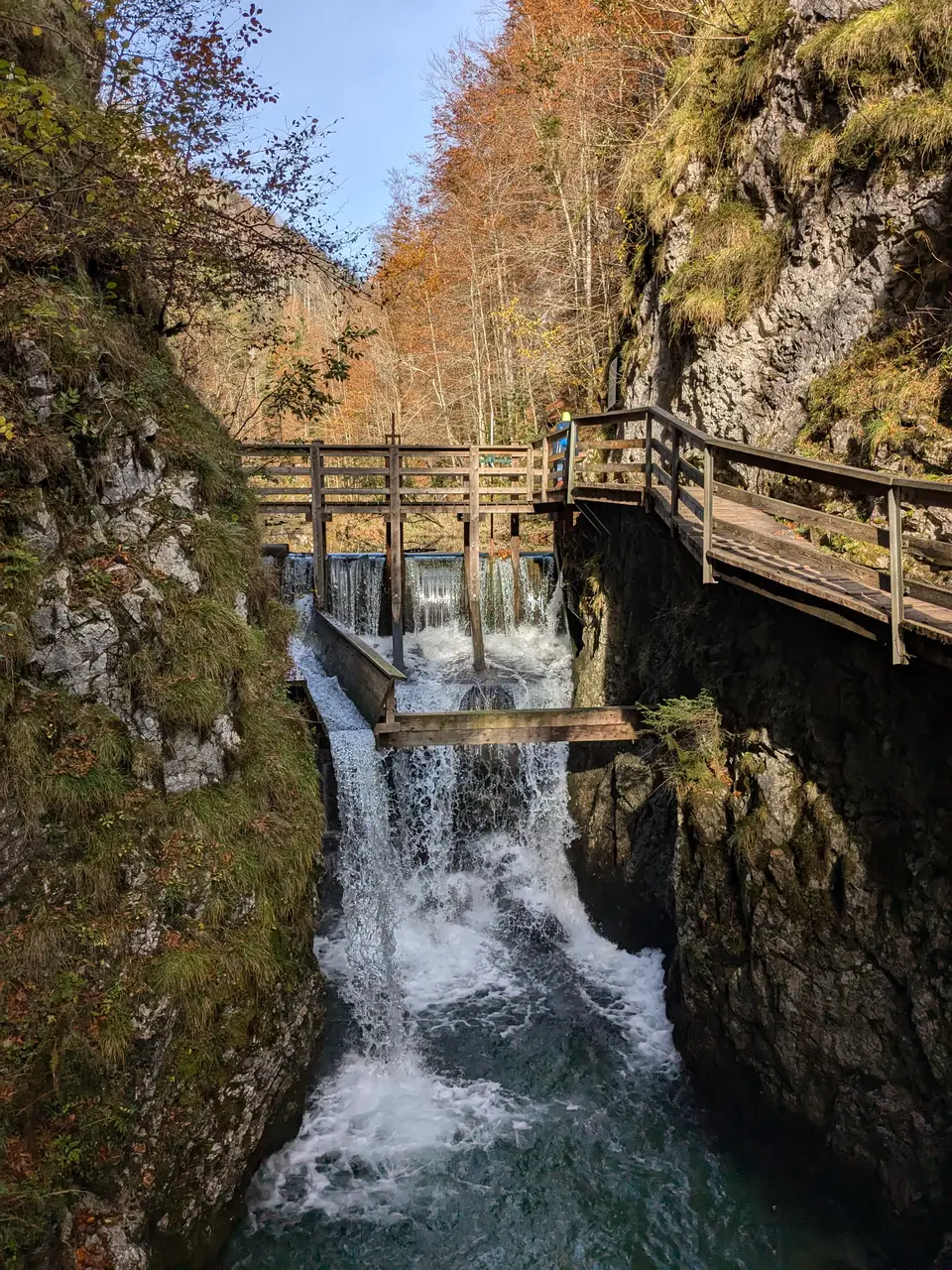 />
/>I soon reach the lock that dams up the waters of the Mendling. The water falls down high. This is where the logs are collected. When the lake is full of logs, it is opened. Then the water rushes through the narrow channel and sweeps the logs away. A marvellous place to linger.
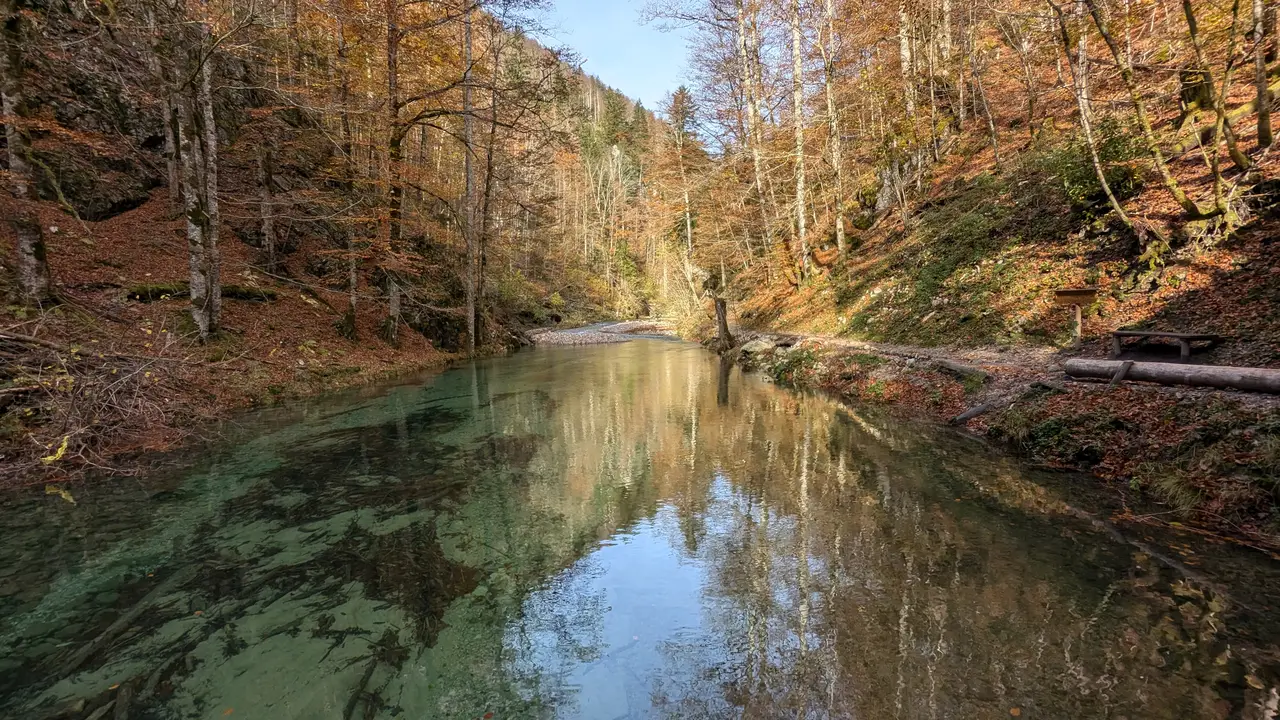
I continue my hike along narrow paths at the edge of the Mendling. The lumberjacks used these paths to loosen dovetailed tree logs. Sometimes they even had to get into the ice-cold water to do this. A dangerous job that cost many their life. The water and the trees swept them away.
Towards the end of the path, the valley becomes more open again. There is a mill here that draws water from a small spring for its water wheel. Creaky! Cracky!
for to mill the farmer hurries.
“Master Miller! Hallo, man!
Grind me that as quick as you can!"
“In with ’em!” Each wretched flopper
headlong goes into the hopper.
As the farmer turns his back, he
hears the mill go “Creaky! Cracky!"
Wilhelm Busch. Max and Maurice. Translated by Charles T. Brooks. 1902.
Fortunately, Max and Moritz are not ground in this mill, but flour is. The flour was perfect for transport to distant lands. But the woodcutters could also use it for their meals. They cooked their simple, meagre fare in the forest. Flour, lard or butter, milk and water. That was all they needed for Muas or Nocken.
Hammerherrenhaus#
After the mill, the water flows more calmly again. I pass fishponds where countless fish are swimming around. These were reserved for the richer people, the Hammerherren, the owners of the forges and metalworking shops. At the end of the path, shortly after the ponds, is their estate, the stately Hammerherrenhaus. Nowadays, you can order lunch there. Rest after the hike through the Mendling Valley. The second entrance and ticket office to the Mendling Valley is also located in this house.
Finally, I hike back through the Mendling Valley to the car park in Lassing. The whole loop is not particularly long, 7 kilometres there and back. The beautiful autumn scenery brightens my mood. A beautiful day.
